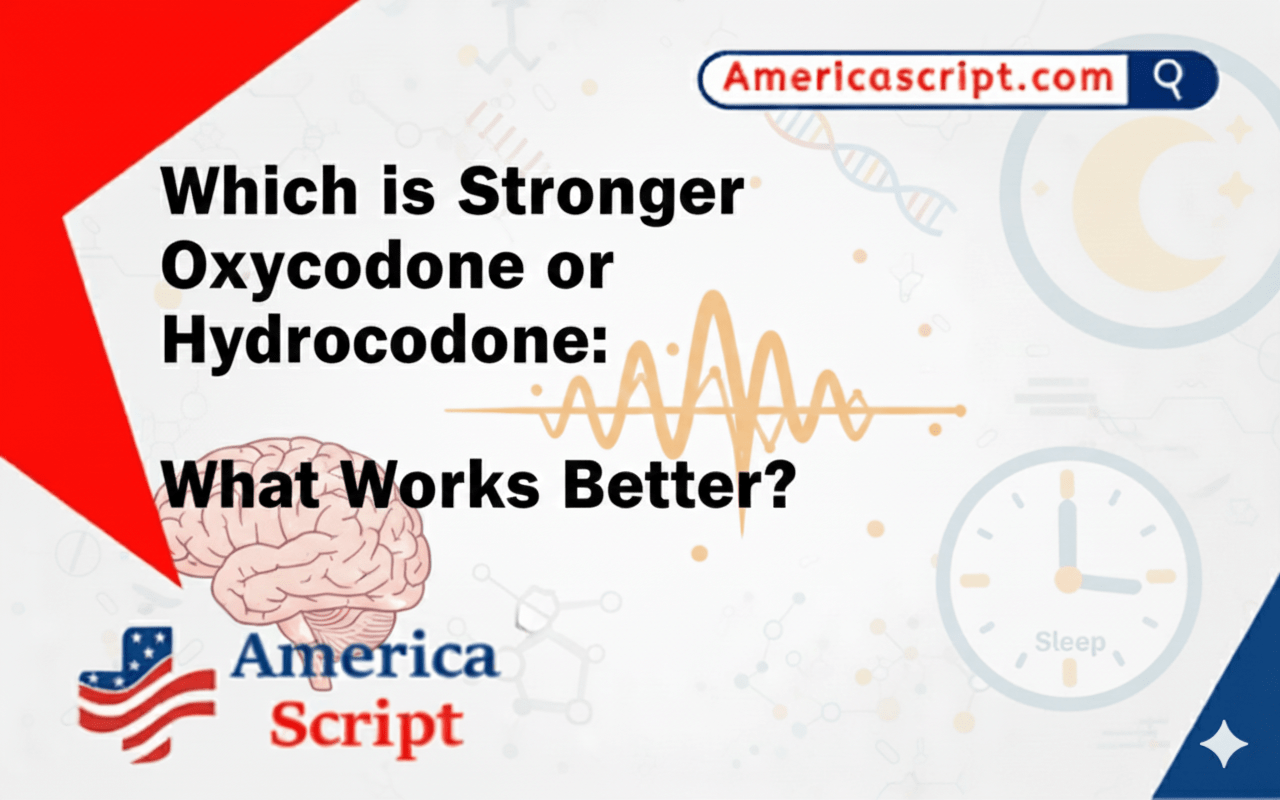What is Percocet? Real Answers from Medical Experts

What is Percocet? This powerful prescription medication combines oxycodone and acetaminophen to help treat severe pain when other pain medicines haven’t worked effectively. If you’ve been prescribed this medication or are curious about its uses, understanding its composition and effects is essential.
Specifically, Percocet contains oxycodone, which may be habit-forming[-3], along with acetaminophen, creating a dual-action pain reliever. This combination is available as tablets or solution taken by mouth. Although effective for pain management, it comes with important considerations. For instance, oxycodone may cause serious breathing problems, especially during the first 72 hours of treatment. Additionally, common side effects include constipation, dizziness, drowsiness, nausea, and headaches.
In this article, we’ll explore everything you need to know about Percocet, from its medical uses to potential risks. We’ll also discuss what makes this prescription drug different from other pain medications and why it requires careful monitoring by healthcare providers.
What is Percocet and how does it work?
Percocet combines two powerful pain-relieving medications: oxycodone and acetaminophen (commonly known as Tylenol). This prescription medication comes in various strengths, with tablets containing 2.5, 5, 7.5, or 10 mg of oxycodone hydrochloride paired with 325 mg of acetaminophen.
Oxycodone, the opioid component, works by binding to specific receptors in your brain and nervous system. It’s a semisynthetic opioid derived from thebaine that primarily targets mu-opioid receptors, though it also interacts with kappa and delta receptors. Upon binding, oxycodone triggers a complex chain reaction that reduces pain signals by inhibiting nociceptive neurotransmitters. Click Here To Buy Oxycodone Online
Meanwhile, acetaminophen works through a different mechanism. Though its exact process isn’t fully understood, researchers believe it acts centrally in the brain to reduce pain and fever. If You Want Oxycodone From Over-The-Counter You Can Visit americascript.com And Buy Oxycodone Online
Together, these medications create a dual-action effect. Oxycodone provides strong pain relief while acetaminophen enhances these effects by targeting different pain receptors. This combination allows for effective pain management with smaller amounts of opioid.
The medication begins working quickly but lasts only about five hours. Furthermore, Percocet affects various body systems beyond pain relief. It influences the respiratory center (causing potential breathing depression), pupil muscles (causing constriction), and gastrointestinal tract (slowing peristalsis, leading to constipation).
Consequently, while Percocet effectively manages moderate to severe pain, its complex interactions with multiple body systems explain both its effectiveness and potential for side effects.
What is Percocet used for?
Healthcare providers primarily prescribe Percocet for the management of pain severe enough to require opioid treatment and when other pain medications have proven ineffective or intolerable. This prescription-only medication addresses a specific need in pain management.
Click Here To Buy Percocet Online From americascript.com
- Moderate to severe pain requiring immediate relief
- Acute pain (lasting less than one month) from injury, surgery, or trauma
- Subacute pain (lasting 1-3 months)
- Chronic pain (lasting three months or more) from ongoing conditions
Importantly, the FDA has established clear limitations on Percocet use. Due to risks of addiction, abuse, and misuse, doctors should only prescribe it when alternative treatments haven’t been tolerated or haven’t provided adequate pain relief.
The medication follows specific dosing schedules based on pain type. Standard formulations are taken every 4-6 hours as needed, whereas extended-release versions provide around-the-clock relief taken every 12 hours. Your doctor might adjust your dosage throughout treatment depending on pain control and side effects.
Given its classification as a Schedule II controlled substance, Percocet is available only under the Opioid Analgesic REMS program—a restricted distribution system ensuring appropriate use. Successful pain management typically involves limiting opioids to the lowest effective dose for a limited time period.
Risks, side effects, and safety concerns
Taking Percocet carries significant risks beyond its pain-relieving benefits. The medication commonly causes constipation, dizziness, drowsiness, nausea, vomiting, headache, and dry mouth. Over 5% of patients experience these effects.
Percocet contains two components that each present unique concerns. Oxycodone can lead to addiction, classified as a controlled substance with high misuse potential. Similarly, acetaminophen may cause severe liver damage when consumed above 4,000 mg daily.
Moreover, combining Percocet with alcohol or benzodiazepines significantly increases overdose risk. Signs of overdose include extreme drowsiness, pinpoint pupils, cold/clammy skin, and breathing difficulties.
Percocet requires special consideration during pregnancy, as maternal use can result in neonatal opioid withdrawal syndrome. For breastfeeding mothers, the medication passes into breast milk in variable concentrations.
Long-term Percocet use may affect fertility, as opioids can disrupt hormone production. Reproductive-age women should consider these effects, as research shows opioid exposure near conception is associated with 29% lower chance of pregnancy.
Conclusion
Understanding Percocet thoroughly remains essential for anyone prescribed this potent medication. Throughout this article, we’ve seen that this dual-action pain reliever combines oxycodone and acetaminophen to manage moderate to severe pain when other treatments fail. However, this effectiveness comes with significant considerations.
First and foremost, Percocet carries serious risks despite its pain-relieving benefits. The oxycodone component can lead to dependence and addiction, while the acetaminophen may cause liver damage at high doses. Additionally, side effects like respiratory depression, constipation, and drowsiness deserve careful attention from both patients and healthcare providers.
Patients should therefore approach Percocet with appropriate caution. Anyone prescribed this medication must follow dosing instructions exactly as provided by their doctor. Equally important, patients should never combine Percocet with alcohol or benzodiazepines due to potentially dangerous interactions.
The classification as a Schedule II controlled substance underscores why Percocet requires strict medical supervision. Your doctor will likely prescribe the lowest effective dose for the shortest necessary period to minimize risks while managing your pain effectively.
Overall, Percocet serves as a valuable tool in pain management when used appropriately under medical guidance. Still, patients must remain aware of both its benefits and potential dangers. With proper education and careful monitoring, this medication can provide needed relief while minimizing associated risks.
FAQs
Q1. What is the difference between Percocet and oxycodone?
Ans. Percocet is a combination medication containing oxycodone and acetaminophen. While oxycodone is the primary pain-relieving component in both, Percocet includes acetaminophen for enhanced pain relief. Pure oxycodone products contain only the opioid medication.
Q2. What are the main uses of Percocet?
Ans. Percocet is primarily used for the relief of moderate to severe pain when other pain medications have proven ineffective. It’s prescribed for various types of pain, including acute pain from injury or surgery, and chronic pain from ongoing conditions.
Q3. How does Percocet compare to hydrocodone in terms of strength?
Ans. Both Percocet and hydrocodone are effective for moderate to severe pain, with Percocet often considered slightly stronger. However, the best choice depends on individual factors such as side effects and patient needs, and should be determined by a healthcare provider.
Q4. Is Percocet the same as Tylenol?
Ans. No, Percocet is not the same as Tylenol. Percocet contains oxycodone (an opioid) and acetaminophen (the active ingredient in Tylenol). While it includes acetaminophen, Percocet is a stronger pain medication that requires a prescription due to its opioid component.
Q5. What are the main risks associated with taking Percocet?
Ans. The main risks of taking Percocet include potential for addiction due to its opioid component, liver damage from acetaminophen if taken in high doses, and side effects such as respiratory depression, constipation, and drowsiness. It can also interact dangerously with alcohol and certain other medications.
Get Flat 10% Discount on All Medicines. Use Coupon Code – SALE10 on americascript.com



